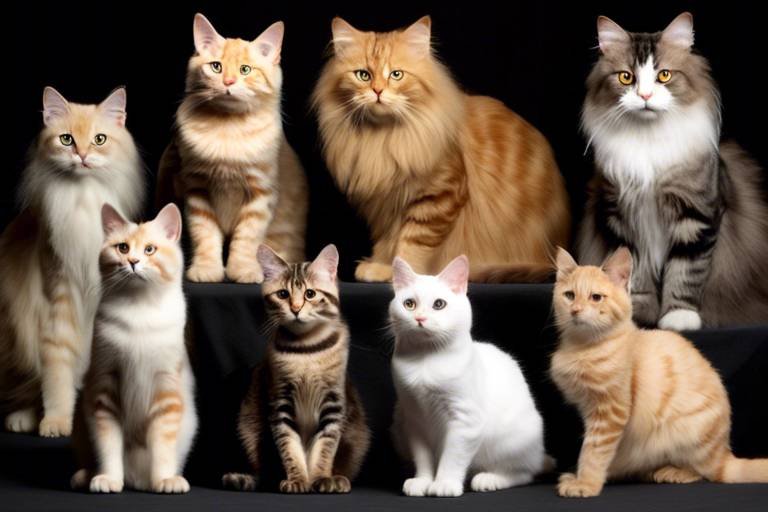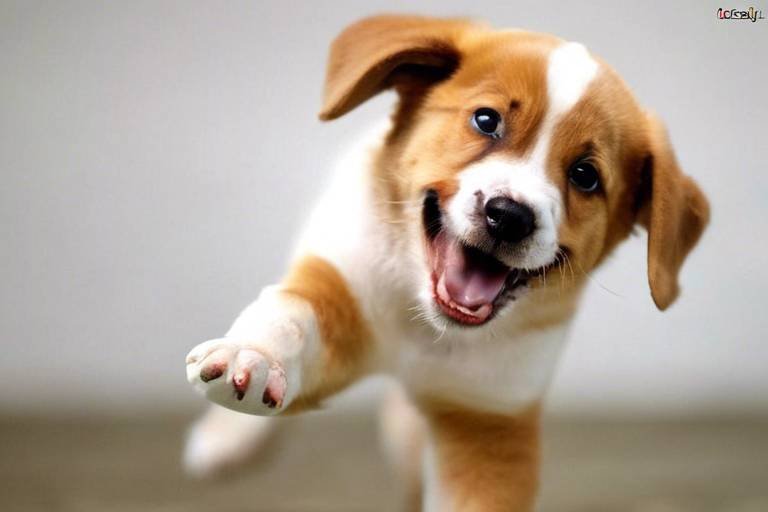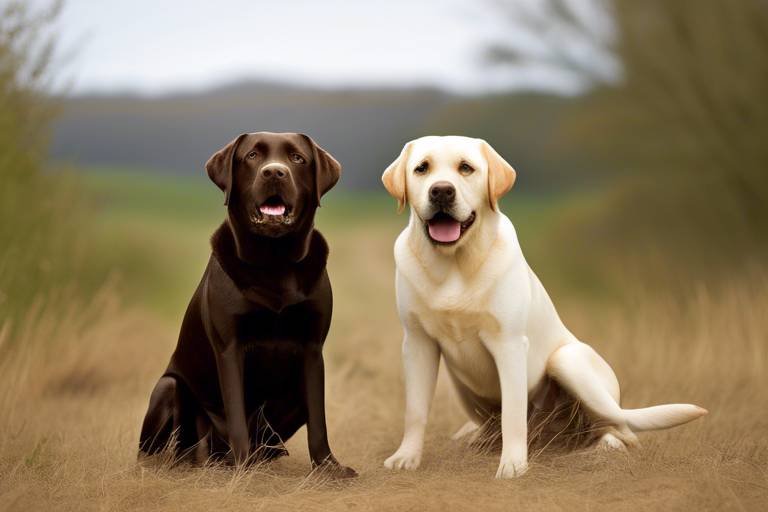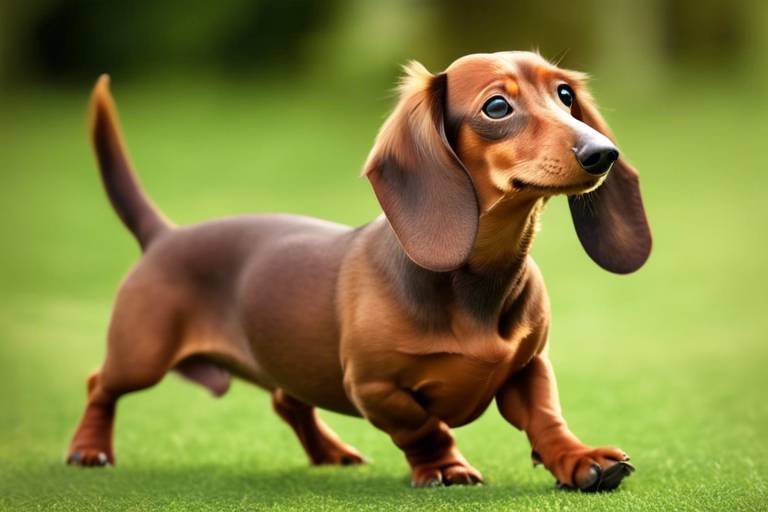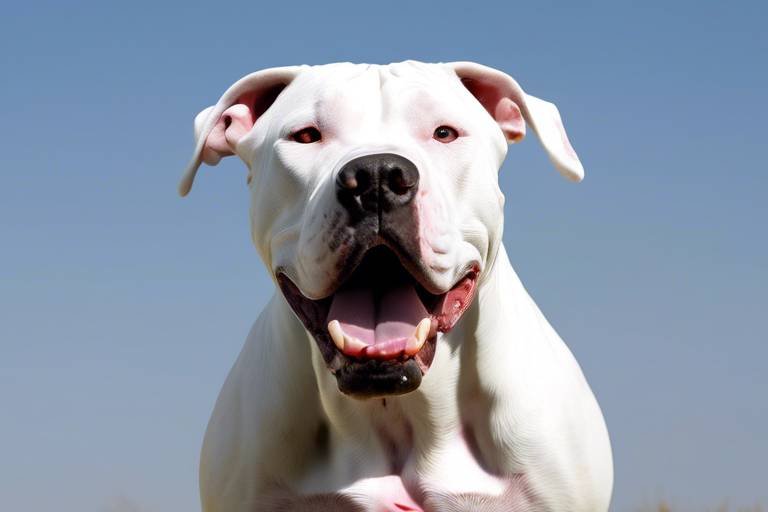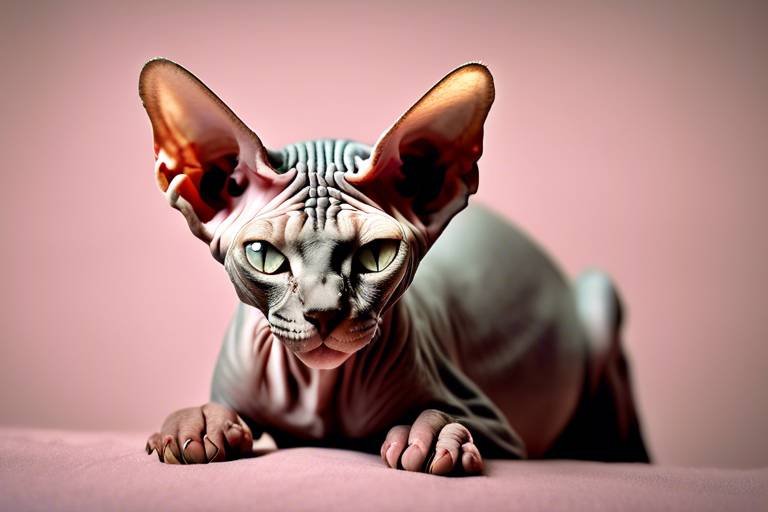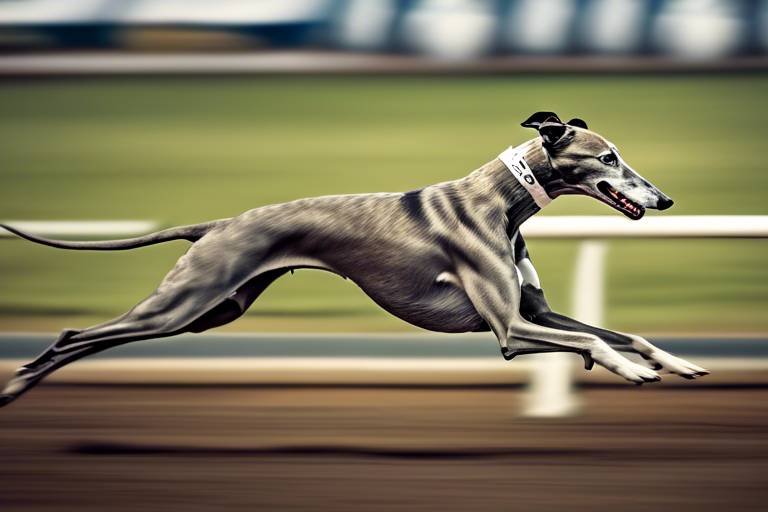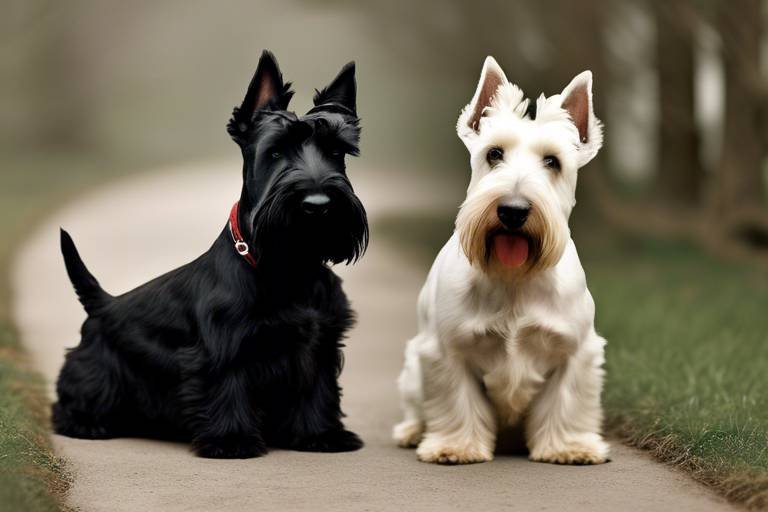Understanding the Characteristics of the Belgian Tervuren
The Belgian Tervuren is not just any dog; it’s a remarkable breed that combines beauty, intelligence, and agility in one stunning package. Known for their striking appearance and versatile nature, Tervurens have captured the hearts of dog lovers around the world. But what truly sets them apart? This article will dive deep into their unique traits, including their rich history, physical characteristics, temperament, training needs, and health considerations.
Originating from Belgium, the Tervuren was initially bred as a herding dog, helping farmers manage their livestock. This background has endowed them with a strong work ethic and a keen intelligence that makes them highly trainable. These dogs thrive on mental and physical stimulation, which means they are not just companions but also excellent working dogs in various roles, including search and rescue, therapy, and agility sports. Their loyalty and protective nature make them exceptional family pets, always ready to guard and entertain their loved ones.
One of the most captivating aspects of the Belgian Tervuren is their physical appearance. With a long, flowing double coat that can be a rich fawn to mahogany color, they exude elegance and grace. Their facial expressions are incredibly expressive, conveying a range of emotions that connect them deeply with their human companions. Standing between 22 to 26 inches tall and weighing around 40 to 65 pounds, Tervurens are well-proportioned and athletic, making them perfect for various activities, from hiking to dog sports.
However, owning a Belgian Tervuren comes with responsibilities. Their beautiful coat requires regular grooming to prevent matting and to keep it looking its best. Understanding their grooming needs is crucial for any prospective owner. Not only does a well-groomed Tervuren look stunning, but it also contributes to their overall health and happiness.
In short, the Belgian Tervuren is a breed that embodies the perfect mix of beauty, brains, and loyalty. Whether you’re looking for a devoted family companion or a hard-working partner, the Tervuren is sure to impress with their remarkable characteristics and unwavering dedication.
- What is the average lifespan of a Belgian Tervuren? Typically, they live between 12 to 14 years.
- Are Belgian Tervurens good with children? Yes, they are generally good with children and can be very protective.
- Do they require a lot of exercise? Yes, Tervurens are active dogs that need regular exercise to stay healthy and happy.
- How often should they be groomed? Their double coat requires grooming at least once a week, with more frequent brushing during shedding seasons.

History of the Belgian Tervuren
The Belgian Tervuren boasts a fascinating history that dates back to the late 19th century in Belgium. Originally bred as a herding dog, this breed was developed in the village of Tervuren, which is where it gets its name. The Tervuren was part of a group of Belgian herding dogs that included the Malinois, Laekenois, and Groenendael. Each of these breeds was developed for specific traits, but the Tervuren was particularly valued for its intelligence, agility, and versatility.
In the late 1800s, Belgian farmers needed a reliable dog to help them manage their livestock. The Tervuren quickly became a favorite due to its ability to herd sheep and cattle with remarkable skill. It was not just a working dog; it also began to gain popularity as a companion animal. The breed's adaptability allowed it to transition from farms to homes, where it provided loyalty and companionship.
As the breed gained recognition, formal breeding programs were established to maintain its unique traits. In 1891, the first breed club was formed, and by 1907, the Belgian Tervuren was officially recognized by the American Kennel Club (AKC). This recognition marked a significant milestone in the breed's history, as it opened doors for the Tervuren to be showcased in dog shows and competitions across the globe.
Throughout the 20th century, the Belgian Tervuren continued to evolve. Its intelligence and trainability made it a popular choice for various roles, including police work, search and rescue, and even therapy. The breed's strong work ethic and eagerness to please have solidified its reputation as a versatile working dog.
Today, the Belgian Tervuren is not only cherished for its herding abilities but also for its loyalty and affectionate nature as a family pet. Whether in the field or at home, these dogs have proven to be adaptable, intelligent, and loving companions. The legacy of the Belgian Tervuren is a testament to its remarkable ability to connect with humans, making it a breed that is both rich in history and beloved by many.
- What is the origin of the Belgian Tervuren? The breed originated in Belgium, specifically in the village of Tervuren, where it was initially bred for herding livestock.
- Are Belgian Tervurens good family pets? Yes, they are known for their loyalty, intelligence, and affectionate nature, making them excellent family companions.
- How much exercise do Belgian Tervurens need? They require regular exercise and mental stimulation, ideally through activities like agility training, obedience, and playtime.
- What are common health issues in Belgian Tervurens? Like many breeds, they can be prone to hip dysplasia and certain eye disorders, so regular veterinary check-ups are essential.

Physical Characteristics
The Belgian Tervuren is a stunning breed, renowned for its striking appearance and graceful build. Typically, these dogs stand between 22 to 26 inches tall at the shoulder, with males generally being larger than females. Weighing between 50 to 75 pounds, their athleticism is evident in their well-defined muscles and agile movements. One glance at a Tervuren, and you can see why they are often chosen for herding and agility competitions; their elegance and power are truly captivating.
One of the most distinctive features of the Belgian Tervuren is its double coat. This breed boasts a long, flowing outer coat that is both beautiful and functional, providing protection against the elements. The undercoat is dense and soft, insulating them against cold weather. The coat comes in various shades, including fawn and mahogany, often with a black mask that adds to their regal appearance. Their coat not only enhances their beauty but also serves a practical purpose, as it helps regulate their body temperature in different climates.
When it comes to grooming, the Tervuren requires a bit of commitment. Regular grooming is essential to keep their coat in top condition and to avoid matting. Owners should be prepared to brush their Tervuren at least once a week, but during shedding seasons, which typically occur in spring and fall, more frequent brushing is necessary to manage the increased hair loss. This breed is known to shed moderately year-round, so incorporating grooming into your routine will keep your home and your dog looking their best.
As previously mentioned, the Tervuren's coat requires diligent care. Using a slicker brush or a pin brush can help remove loose hair and prevent tangles. Additionally, a de-shedding tool can be beneficial during shedding seasons to manage the excessive fur. Bathing should be done every few months or as needed, using a dog-friendly shampoo to keep their coat clean and healthy. It's important to note that over-bathing can strip the coat of its natural oils, so moderation is key.
Understanding the shedding patterns of the Belgian Tervuren is crucial for any owner. These dogs typically shed lightly throughout the year but experience a significant increase in shedding during the spring and fall. This seasonal shedding is a natural process as they adapt their coats to the changing temperatures. Owners should expect to see more hair around the house during these times, making it essential to have a good vacuum cleaner on hand!
To maintain the health of a Tervuren's coat, regular bathing is essential. It's recommended to bathe them every 6 to 8 weeks, depending on their activity level and how dirty they get. When bathing, it's best to use lukewarm water and a gentle shampoo designed for dogs. After bathing, ensure that you dry them thoroughly, especially in cooler weather, to prevent them from getting cold. Regular nail trimming and ear cleaning are also important aspects of their grooming routine, contributing to their overall health and hygiene.
Coat and Grooming
The Belgian Tervuren is truly a sight to behold, boasting a stunning double coat that not only adds to its beauty but also serves a practical purpose. This breed's coat is designed to protect them from the elements, making them well-suited for various weather conditions. The outer layer is long and straight, while the undercoat is dense and soft, providing insulation. However, this gorgeous coat requires a commitment to grooming to keep it looking its best. Regular grooming not only enhances the dog's appearance but also promotes skin health and helps to prevent matting.
When it comes to grooming your Belgian Tervuren, consistency is key. Ideally, you should brush your dog at least two to three times a week. During shedding seasons, which typically occur in spring and fall, you may need to increase this frequency to daily brushing. This will help manage the shedding and keep your home fur-free. A good grooming session can be a bonding experience for you and your dog, allowing you to check for any skin issues or parasites while also providing much-needed attention and affection.
For the best results, use a slicker brush or an undercoat rake, as these tools can effectively reach the undercoat without damaging the outer layer. Additionally, incorporating a grooming glove can help remove loose fur and give your Tervuren a nice massage at the same time. Remember, grooming isn’t just about aesthetics; it’s also about health. Regular brushing can help you spot any abnormalities, such as lumps or skin irritations, early on.
Bathing your Tervuren is another important aspect of grooming. While you don’t want to over-bathe, as it can strip the coat of its natural oils, a bath every two to three months is generally sufficient. When bathing, use a quality dog shampoo that is gentle on the skin and specifically designed for long-haired breeds. Make sure to rinse thoroughly to avoid any residue that could irritate their skin.
After bathing, it’s crucial to dry your dog properly. Tervurens can be prone to skin issues if they remain damp for too long, so using a towel to absorb excess moisture followed by a gentle blow-dry on a low setting can help keep their coat healthy. Always keep an eye on your dog during this process to ensure they are comfortable and not frightened by the noise.
In summary, grooming your Belgian Tervuren is a vital part of their care routine. By dedicating time to regular brushing, proper bathing, and using the right tools, you can maintain their beautiful coat and ensure they are healthy and happy. Remember, grooming is not just a chore; it’s an opportunity to connect with your furry friend and show them just how much you care!
- How often should I groom my Belgian Tervuren? Ideally, brush your Tervuren two to three times a week, and daily during shedding seasons.
- What tools do I need for grooming? A slicker brush, undercoat rake, and grooming gloves are highly recommended for effective grooming.
- How frequently should I bathe my Tervuren? A bath every two to three months is generally sufficient, but always monitor their coat condition.
- Can I use human shampoo on my dog? No, it's best to use a dog-specific shampoo to avoid irritating their skin.
Shedding Patterns
The Belgian Tervuren, with its stunning double coat, is not just a feast for the eyes but also a breed that requires some attention when it comes to shedding. Understanding the shedding patterns of this magnificent dog is essential for prospective and current owners alike. Generally, Tervurens shed year-round, but they experience two major shedding seasons: spring and fall. During these times, you might notice more hair floating around your home, as they prepare for changes in temperature. Think of it like nature's way of helping them transition into their summer and winter coats!
During the shedding seasons, it's common for Tervurens to lose a significant amount of fur, which can be quite alarming if you're not prepared. On average, you might find yourself brushing your Tervuren more frequently—perhaps every other day or even daily—to keep the loose fur at bay. A good brushing session not only helps manage shedding but also strengthens the bond between you and your furry friend. Plus, it’s a great way to keep an eye out for any skin issues or parasites that might need attention.
To give you a clearer picture of what to expect, here’s a simple breakdown of the shedding patterns:
| Season | Shedding Intensity | Recommended Grooming Frequency |
|---|---|---|
| Spring | High | Every other day |
| Fall | High | Every other day |
| Winter/Summer | Moderate | Weekly |
It’s important to note that while shedding is a natural process, excessive shedding can sometimes indicate underlying health issues. If you notice that your Tervuren is shedding more than usual or has bald spots, it’s wise to consult with your veterinarian. They can help rule out allergies, skin conditions, or nutritional deficiencies that might be causing the problem.
In conclusion, while the shedding patterns of the Belgian Tervuren can require a bit of extra effort, the rewards of having such a loyal and intelligent companion far outweigh the challenges. With regular grooming and a keen eye on their health, you can enjoy the beauty of this breed without too much hassle!
- How often should I groom my Belgian Tervuren? - During shedding seasons, it's best to groom every other day, while in off-seasons, weekly grooming is sufficient.
- Are there any specific grooming tools recommended for Tervurens? - A slicker brush and an undercoat rake are excellent tools for managing their double coat.
- What can I do to minimize shedding? - Regular grooming, a balanced diet, and keeping your dog hydrated can help reduce shedding.
- Is shedding a sign of health issues? - Excessive shedding can indicate health problems, so consult your vet if you notice significant changes.
Bathing and Maintenance
When it comes to the Belgian Tervuren, proper bathing and maintenance are not just about keeping them clean; it's about ensuring their overall health and happiness. These beautiful dogs have a luxurious double coat that, while stunning, requires some dedicated care. So, how often should you bathe your Tervuren? Generally, it's recommended to bathe them every 6 to 8 weeks, but this can vary based on their activity level and lifestyle. If your Tervuren loves to roll around in the mud or has a penchant for water, you might find yourself reaching for the shampoo a bit more often!
Using a high-quality dog shampoo is crucial. Look for products that are specifically designed for dogs, as human shampoos can disrupt the natural oils in their skin, leading to dryness and irritation. Additionally, make sure to rinse thoroughly to avoid any residue that could cause skin issues later on. After bathing, drying your Tervuren can be a challenge, especially if they’re not too keen on being towel-dried. Using a blow dryer on a low setting can help, but be sure to keep it at a safe distance to avoid overheating their skin.
Grooming goes hand-in-hand with bathing. Regular brushing is essential to keep their coat free from tangles and mats. A good brush will not only remove loose hair but also distribute natural oils throughout their coat, giving it that healthy shine. Aim to brush your Tervuren at least once a week, but during shedding seasons, you may want to increase this to several times a week. Remember, a well-groomed dog is a happy dog!
Here’s a quick overview of the essential maintenance tasks for your Belgian Tervuren:
- Brushing: Once a week, more frequently during shedding seasons.
- Bathing: Every 6 to 8 weeks, or as needed.
- Nail Trimming: Monthly or as needed to keep their nails short.
- Ear Cleaning: Regular checks for dirt and wax buildup.
Additionally, don't forget about their nails! Keeping your Tervuren’s nails trimmed is crucial not only for their comfort but also for their health. Long nails can lead to painful walking and even injury. Aim to trim their nails every month, or as needed, depending on their activity level. If you hear clicking sounds when they walk, it’s time for a trim!
In conclusion, maintaining your Belgian Tervuren’s coat and overall hygiene is a rewarding experience that strengthens the bond between you and your furry friend. By following these bathing and grooming tips, you’ll ensure that your Tervuren remains not only beautiful but also healthy and happy.
Q: How often should I bathe my Belgian Tervuren?
A: It's generally recommended to bathe them every 6 to 8 weeks, but this can vary based on their activities.
Q: What type of shampoo should I use?
A: Use a high-quality dog shampoo specifically designed for dogs to avoid skin irritation.
Q: How can I reduce shedding?
A: Regular brushing, especially during shedding seasons, can significantly help reduce loose hair.
Q: Is it necessary to trim my Tervuren's nails?
A: Yes, regular nail trimming is essential for their comfort and health. Aim for monthly trims.
Temperament and Behavior
The Belgian Tervuren is not just a dog; it’s a bundle of energy wrapped in a coat of intelligence and loyalty. This breed is known for its exceptional temperament, which makes it a favorite among dog lovers and families alike. Tervurens are highly sociable, often forming strong bonds with their human companions. They thrive on interaction and enjoy being part of family activities, making them excellent companions for active households.
One of the standout traits of the Belgian Tervuren is their high energy level. These dogs were bred for herding, which means they require a significant amount of exercise to keep them physically and mentally stimulated. If you’re considering bringing a Tervuren into your home, be prepared for daily walks, play sessions, and perhaps even agility training. Without adequate exercise, they can become bored and may exhibit undesirable behaviors, such as chewing or excessive barking.
In addition to their energetic nature, Tervurens are known for their intelligence. They are quick learners and often excel in obedience training. This breed thrives on mental challenges, so incorporating puzzle toys or training exercises can be beneficial. If you’ve ever seen a Tervuren in action, you’ll notice their keen ability to understand commands and their eagerness to please their owners. This makes them highly trainable, but it also means that they require consistent training and mental stimulation to keep their minds sharp.
When it comes to family dynamics, the Belgian Tervuren is typically very affectionate and protective. They often take on the role of the family guardian, watching over their loved ones with a watchful eye. This protective instinct makes them excellent watchdogs, but it’s essential to socialize them from a young age to ensure they are comfortable around strangers and other pets. Early socialization helps them distinguish between normal situations and potential threats, which is crucial for their development.
In summary, the Belgian Tervuren’s temperament and behavior can be described as:
- Affectionate: They love to be around people and often seek out companionship.
- Energetic: They require plenty of exercise to stay happy and healthy.
- Intelligent: Quick to learn and eager to please, making training enjoyable.
- Protective: Naturally inclined to guard their family, requiring proper socialization.
Understanding these traits is vital for anyone considering this breed. With the right environment and training, a Belgian Tervuren can become a loyal and loving member of your family. Just remember, they thrive on interaction, so be prepared to engage with them regularly!
- What is the average lifespan of a Belgian Tervuren? The average lifespan is typically around 12 to 14 years.
- Are Belgian Tervurens good with children? Yes, they are generally very good with children, especially when properly socialized.
- How much exercise do they need? Belgian Tervurens require at least 1 to 2 hours of exercise each day.
- Do they shed a lot? Yes, they are moderate to heavy shedders, especially during seasonal changes.

Training and Socialization
Training and socialization are not just important; they are absolutely crucial for the Belgian Tervuren. This breed is renowned for its intelligence and eagerness to learn, which makes them somewhat of a blank canvas when it comes to training. However, if you want to paint a masterpiece, you'll need to start early and be consistent. Think of training your Tervuren like teaching a child; the earlier you start, the more they absorb. These dogs thrive on mental stimulation, so keeping their training sessions engaging and fun is key.
Socialization is equally important. A well-socialized Tervuren is not just a joy to have around; they are also better equipped to handle various situations and environments. Exposure to different people, animals, and settings will help your Tervuren develop into a well-rounded and confident companion. Imagine introducing your dog to a bustling park filled with children, other dogs, and a cacophony of sounds—this experience can be both exciting and overwhelming for them. Therefore, gradual exposure is essential.
When it comes to training techniques, positive reinforcement works wonders. This can include treats, praise, or playtime as rewards for good behavior. The more you encourage your Tervuren, the more motivated they will be to learn. Here are some effective training techniques:
- Clicker Training: This method uses a clicking sound to mark desired behavior, followed by a reward. It helps your Tervuren associate the click with something positive.
- Consistency is Key: Use the same commands and cues every time. If you say "sit" one day and "down" the next, it can confuse your dog.
- Short Sessions: Keep training sessions brief but frequent. A 5-10 minute session a few times a day is often more effective than a long hour.
As for socialization strategies, start with puppy classes if your Tervuren is still young. These classes provide a controlled environment where your dog can interact with other dogs and people. Additionally, consider taking your Tervuren on outings to various locations—like pet-friendly stores or dog parks. Always supervise these interactions to ensure they are positive experiences.
In summary, training and socialization are not just tasks to check off your list; they are ongoing processes that enrich your Tervuren's life and strengthen the bond between you two. By investing time and effort into these areas, you're paving the way for a happy, well-adjusted dog that’s ready to take on the world with you.
Q: When should I start training my Belgian Tervuren?
A: It's best to start training as early as possible, ideally when they are puppies. Early training helps them become more adaptable and well-behaved.
Q: How long should training sessions be?
A: Keep training sessions short and engaging, around 5-10 minutes, and repeat them multiple times throughout the day.
Q: What is the best way to socialize my Tervuren?
A: Gradually expose your Tervuren to different environments, people, and other animals. Puppy classes are also a great way to start socialization.
Obedience Training
When it comes to for the Belgian Tervuren, the first thing to remember is that these dogs are not just pets; they are intelligent, energetic, and eager to please. This breed thrives on mental stimulation and physical activity, making training an essential part of their daily routine. But how do you harness that intelligence effectively? The key lies in understanding their unique temperament and using techniques that resonate with their natural instincts.
One of the most effective methods for training a Belgian Tervuren is through positive reinforcement. This means rewarding your dog with treats, praise, or playtime whenever they successfully follow a command. For instance, if you ask them to sit and they do, a tasty treat or a cheerful “good boy/girl” can reinforce that behavior. Over time, they will associate the command with the reward, making them more likely to obey in the future.
Consistency is another crucial factor in obedience training. It’s important to use the same commands and cues every time. If one day you say “sit” and the next you say “down” for the same action, your Tervuren will become confused. Instead, establish a clear set of commands and stick to them. This consistency will help your dog learn faster and feel more secure in their understanding of what you expect from them.
Additionally, incorporating short training sessions into your daily routine can be incredibly beneficial. Belgian Tervurens have a relatively short attention span, so keeping training sessions between 5 to 10 minutes will prevent them from becoming bored or frustrated. You can gradually increase the duration as they become more accustomed to the training. For example, you might start with simple commands like “sit” and “stay” before moving on to more complex tasks.
Another effective strategy is to mix training with play. Since Tervurens are highly active dogs, combining training exercises with their favorite games can make the process enjoyable for both of you. For example, you might practice the “come” command during a game of fetch. This not only reinforces the command but also builds a stronger bond between you and your dog.
Finally, consider enrolling your Belgian Tervuren in a formal obedience class. These classes can provide structured training and socialization opportunities. Being around other dogs and people can help your Tervuren learn to focus amidst distractions, which is an essential skill for any well-trained dog.
In summary, effective obedience training for the Belgian Tervuren requires a combination of positive reinforcement, consistency, short training sessions, and a touch of playfulness. By investing time and effort into training, you’ll not only have a well-behaved companion but also a more fulfilling relationship with your furry friend.
- How long does it take to train a Belgian Tervuren?
Training duration varies based on the individual dog and the complexity of the commands. Generally, consistency and daily practice yield the best results. - Can I train my Tervuren at home?
Absolutely! Home training can be very effective, especially when combined with positive reinforcement techniques. - What age should I start training my Tervuren?
It's best to start training as early as possible, ideally when they are puppies, to instill good habits from a young age. - Is socialization part of obedience training?
Yes, socialization is crucial. Exposing your Tervuren to different environments, people, and other animals helps them develop into well-rounded dogs.
Socialization Strategies
Socializing your Belgian Tervuren is a crucial step in ensuring they grow into well-adjusted, confident adults. Just like humans, dogs thrive on experiences and interactions with their environment. Imagine your Tervuren as a sponge, soaking up everything around them; the more varied the experiences, the more well-rounded they become. But how do you effectively socialize this intelligent breed?
First and foremost, start early. The critical socialization window for puppies is between 3 to 14 weeks of age. During this period, expose your Tervuren to a variety of people, environments, and other animals. Think of it as a grand adventure where your pup learns the ropes of the world. Take them to parks, pet-friendly stores, and even busy streets. Each outing is an opportunity for them to learn and adapt.
Incorporating structured playdates with other dogs can also be beneficial. This not only helps them learn canine social cues but also allows them to develop their play style. Just like humans, dogs have their unique ways of interacting, and your Tervuren will benefit from learning how to navigate these social waters. Be sure to supervise these interactions to ensure they are positive and safe.
Another effective strategy is to enroll your Tervuren in puppy kindergarten or obedience classes. These settings provide controlled environments where your dog can interact with other dogs and people under the guidance of experienced trainers. Think of it as a classroom where your pup can learn not just commands but also how to behave in a social setting. It’s a win-win situation!
As your Tervuren grows, continue to expose them to new experiences. This could include car rides, visits to different neighborhoods, or even trips to the vet. The goal is to create a positive association with new experiences. If they encounter something unfamiliar, remain calm and reassuring. Your attitude will influence how they perceive the situation. Remember, your dog looks to you for cues on how to react, so be the steady rock in their life.
Lastly, don't forget about positive reinforcement! Reward your Tervuren with treats and praise when they encounter new people or situations calmly. This reinforces the idea that new experiences are a good thing. The more you reward them, the more likely they are to approach new situations with enthusiasm rather than fear.
In summary, effective socialization strategies for your Belgian Tervuren include:
- Early exposure to different environments and people
- Structured playdates with other dogs
- Enrolling in puppy kindergarten or obedience classes
- Continued exposure to new experiences throughout their life
- Using positive reinforcement to encourage good behavior
By following these strategies, you'll help your Belgian Tervuren become a well-socialized and confident companion, ready to tackle whatever life throws their way!
Q: At what age should I start socializing my Belgian Tervuren?
A: It's best to start socializing your Tervuren between 3 to 14 weeks of age, as this is the critical period for their development.
Q: How can I tell if my Tervuren is properly socialized?
A: A well-socialized Tervuren will be confident around new people, animals, and environments. They should exhibit calm behavior and be eager to explore rather than fearful.
Q: What if my Tervuren shows fear or aggression towards new experiences?
A: It's essential to remain calm and patient. Gradually expose them to the new experience, rewarding them for calm behavior, and consider consulting a professional trainer if the behavior persists.
Q: Can I overdo socialization?
A: Yes, too much exposure to overwhelming situations can lead to stress. Always monitor your dog's reactions and ensure that experiences are positive and manageable.

Health Considerations
The Belgian Tervuren, like any other breed, carries its own set of health considerations that potential owners should be aware of. These dogs are generally robust and healthy, but they can be predisposed to certain conditions. Understanding these health issues is crucial for ensuring your furry friend lives a long, fulfilling life. Among the most common health concerns for the Belgian Tervuren are joint issues, particularly hip dysplasia, and various eye disorders that can affect their quality of life.
Hip dysplasia is a genetic condition where the hip joint doesn’t fit into the hip socket properly, leading to arthritis and pain as the dog ages. This issue is often exacerbated by factors such as rapid growth or obesity. To mitigate the risk, it’s essential to maintain a healthy diet and ensure your Tervuren gets plenty of exercise without overexertion during their growing stages.
Another common health issue is progressive retinal atrophy (PRA), a degenerative eye condition that can lead to blindness. While this condition is not immediately apparent, regular veterinary check-ups can help catch it early. In addition to PRA, Tervurens are also at risk for other eye disorders, such as cataracts. Regular eye examinations can help in early detection and management of these conditions.
To give you a clearer picture, here's a quick overview of common health issues affecting the Belgian Tervuren:
| Health Issue | Description | Prevention |
|---|---|---|
| Hip Dysplasia | A genetic condition causing improper hip joint formation. | Maintain a healthy weight and provide regular, moderate exercise. |
| Progressive Retinal Atrophy (PRA) | A degenerative condition that can lead to blindness. | Regular eye check-ups with a veterinarian. |
| Cataracts | Clouding of the eye lens, affecting vision. | Regular veterinary eye exams. |
Preventative care is key to keeping your Belgian Tervuren healthy. Regular veterinary visits for check-ups and vaccinations can catch potential issues early. A well-balanced diet tailored to their age, size, and activity level is also vital. Additionally, consider supplements that promote joint health, especially if your dog is predisposed to hip dysplasia. Remember, a healthy dog is a happy dog!
- What is the average lifespan of a Belgian Tervuren? The average lifespan of a Belgian Tervuren is around 12 to 14 years, but with proper care, they can live longer.
- How often should I take my Tervuren to the vet? Regular check-ups at least once a year are recommended, but older dogs or those with health issues may need more frequent visits.
- Are Belgian Tervurens prone to any specific health issues? Yes, they can be prone to hip dysplasia and eye disorders like PRA and cataracts.
Common Health Issues
The Belgian Tervuren, like any breed, has its share of health concerns that potential owners should be aware of. Understanding these common health issues is crucial for ensuring your furry friend lives a long and healthy life. One of the most prevalent conditions in this breed is hip dysplasia. This genetic condition occurs when the hip joint doesn't fit snugly into the hip socket, leading to arthritis and pain over time. Regular veterinary check-ups can help catch this issue early, allowing for better management.
Another concern is eye disorders, particularly progressive retinal atrophy (PRA) and cataracts. PRA is a degenerative disease that can lead to blindness, while cataracts can cause cloudiness in the lens of the eye, affecting vision. Keeping an eye on your Tervuren's sight and consulting with a vet if you notice any changes is essential. Additionally, skin allergies are not uncommon in this breed. They can be triggered by various environmental factors, including pollen, dust mites, and certain foods. Symptoms often manifest as itching, redness, or inflammation of the skin, which can be distressing for your pet.
Moreover, the Belgian Tervuren can be prone to certain autoimmune diseases that may affect their overall health. These conditions can lead to a variety of symptoms, ranging from mild to severe, depending on the specific disease. It is important to maintain a balanced diet and provide regular exercise to help bolster their immune system.
Here’s a quick summary of some common health issues to watch for:
| Health Issue | Description | Prevention |
|---|---|---|
| Hip Dysplasia | A genetic condition causing joint pain and arthritis. | Regular vet check-ups, controlled exercise. |
| Eye Disorders | Includes PRA and cataracts, leading to vision impairment. | Regular eye examinations. |
| Skin Allergies | Causes itching and inflammation, often due to environmental triggers. | Monitor diet and environment; consult a vet for allergies. |
| Autoimmune Diseases | Conditions that affect the immune system, leading to various symptoms. | Healthy diet and regular exercise. |
In conclusion, being proactive about your Belgian Tervuren's health can make a significant difference in their quality of life. Regular veterinary visits, a balanced diet, and attentive care can help mitigate many of these issues. Remember, a healthy Tervuren is a happy Tervuren!
Q: What are the signs of hip dysplasia in Belgian Tervurens?
A: Signs can include limping, difficulty in rising, reluctance to jump or run, and noticeable pain when touched around the hip area.
Q: How can I prevent skin allergies in my Tervuren?
A: Regular grooming, maintaining a clean living environment, and consulting your vet about suitable diets can help minimize the risk of allergies.
Q: Are there specific vaccinations recommended for Belgian Tervurens?
A: Yes, vaccinations against common canine diseases like distemper, parvovirus, and rabies are essential. Consult your veterinarian for a tailored vaccination schedule.
Q: What is the average lifespan of a Belgian Tervuren?
A: With proper care, the average lifespan of a Belgian Tervuren is around 12 to 14 years.
Preventative Care
When it comes to ensuring your Belgian Tervuren lives a long and happy life, is key. Just like you wouldn't skip regular check-ups for yourself, the same goes for your furry friend. Regular veterinary visits are essential; they help catch any potential health issues before they become serious problems. Aim for at least one visit per year, but if your Tervuren is getting older or has specific health concerns, you might want to consider more frequent check-ups.
During these visits, your vet will conduct a thorough examination and may recommend various vaccinations. Vaccinations are crucial in protecting your dog from common diseases. A typical vaccination schedule for a Belgian Tervuren might include:
| Vaccine | Age to Administer | Frequency |
|---|---|---|
| DHPP (Distemper, Hepatitis, Parvovirus, Parainfluenza) | 6-8 weeks | Every 3-4 weeks until 16 weeks |
| Rabies | 12-16 weeks | Every 1-3 years, depending on local laws |
| Bordetella (Kennel Cough) | 8 weeks | Every 6-12 months |
In addition to vaccinations, nutrition plays a vital role in your Tervuren's health. Providing a balanced diet rich in high-quality protein, healthy fats, and essential vitamins will keep their energy levels up and their coats shiny. Don't forget to consult your vet about the best food options for your dog's age, weight, and activity level. A well-fed dog is a happy dog!
Another important aspect of preventative care is maintaining your dog's dental health. Just like humans, dogs can suffer from dental diseases that can lead to more severe health problems. Regular brushing of your Tervuren's teeth, along with dental chews and professional cleanings, can help prevent plaque buildup and keep their mouth healthy.
Lastly, keeping your Belgian Tervuren active is crucial for their physical and mental well-being. Engage them in regular exercise, whether it’s through walks, playtime, or agility training. This not only helps maintain a healthy weight but also keeps their minds sharp. Remember, a tired dog is a happy dog!
- How often should I take my Belgian Tervuren to the vet? Ideally, once a year for a check-up, but more frequently as they age or if health issues arise.
- What vaccinations does my Tervuren need? Common vaccinations include DHPP, rabies, and Bordetella. Consult your vet for a personalized schedule.
- What type of food is best for a Belgian Tervuren? Look for high-quality dog food that lists meat as the first ingredient and is appropriate for their age and activity level.
- How can I maintain my dog's dental health? Regular brushing, dental chews, and professional cleanings can help keep your dog’s teeth healthy.
Frequently Asked Questions
- What is the temperament of the Belgian Tervuren?
The Belgian Tervuren is known for its intelligence and loyalty. They are highly trainable and often form strong bonds with their families. These dogs are energetic and require regular exercise, making them great companions for active individuals or families. Their sociable nature means they usually get along well with children and other pets when properly socialized.
- How much grooming does a Belgian Tervuren require?
The Tervuren has a beautiful double coat that requires regular grooming to keep it healthy and free of mats. It’s recommended to brush them at least once a week, and more frequently during shedding seasons. Regular grooming not only helps maintain their coat but also allows you to check for any skin issues or parasites.
- What are common health issues in Belgian Tervurens?
Like many breeds, the Belgian Tervuren can be prone to certain health issues, including hip dysplasia and eye disorders. Regular vet check-ups and being aware of any changes in behavior or health can help catch these issues early. Maintaining a healthy diet and ensuring they get enough exercise also contribute significantly to their overall health.
- How can I effectively train my Belgian Tervuren?
Training a Belgian Tervuren can be a rewarding experience due to their high intelligence. Using positive reinforcement techniques, such as treats and praise, works wonders. Start with basic obedience training and gradually introduce more complex commands. Consistency is key, and early socialization is crucial to help them adapt to various situations.
- What should I feed my Belgian Tervuren?
Feeding your Belgian Tervuren a balanced diet is essential for their health. Look for high-quality dog food that lists meat as the first ingredient, and consider their age, size, and activity level when choosing a formula. Consulting with your veterinarian can help you determine the best diet tailored to your dog’s specific needs.
- Are Belgian Tervurens good with children?
Yes, Belgian Tervurens are generally good with children. Their friendly and playful nature makes them suitable companions for kids. However, as with any breed, it’s important to supervise interactions and teach children how to properly interact with dogs to ensure a safe and happy environment for both.
- How much exercise does a Belgian Tervuren need?
Belgian Tervurens are active dogs that require a significant amount of exercise. Aim for at least 1 to 2 hours of physical activity each day. This can include walks, playtime in the yard, or engaging in dog sports. Keeping them physically and mentally stimulated is crucial to prevent boredom and destructive behavior.





